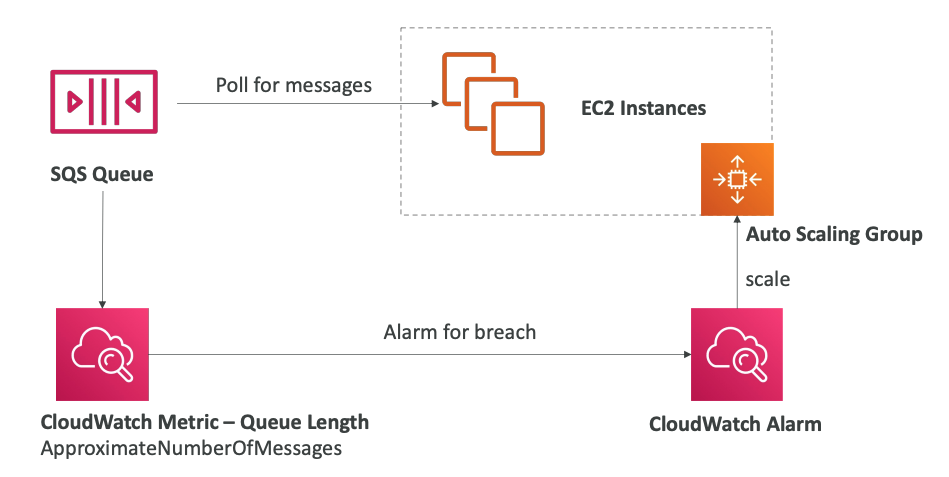# Simple Queue Service (SQS)
# Standard Queue
- Oldest offering (over 10 years old)
- Fully managed service, used to decouple applications
- Attributes:
- Unlimited throughput, unlimited number of messages in queue
- Default retention of messages: 4 days, maximum of 14 days
- Low latency (<10 ms on publish and receive)
- Limitation of 256KB per message sent
- Can have duplicate messages (at least once delivery, occasionally)
- Can have out of order messages (best effort ordering)
# FIFO Queue
FIFO = First In First Out (ordering of messages in the queue)
- Limited throughput: 300 msg/s without batching, 3000 msg/s with
- Exactly-once send capability (by removing duplicates)
- Messages are processed in order by the consumer
# Producing Messages
- Produced to SQS using the SDK (SendMessage API)
- The message is persisted in SQS until a consumer deletes it
- Message retention: default 4 days, up to 14 days
Example: send an order to be processed
- Order id
- Customer id
- Any attributes you want
SQS standard: unlimited throughput
# Consuming Messages
- Consumers (running on EC2 instances, servers, or AWS Lambda)…
- Poll SQS for messages (receive up to 10 messages at a time)
- Process the messages (example: insert the message into an RDS database)
- Delete the messages using the DeleteMessage API
# Multiple EC2 Instances Consumers
- Consumers receive and process messages in parallel
- At least once delivery
- Best-effort message ordering
- Consumers delete messages after processing them
- We can scale consumers horizontally to improve throughput of processing
# Security
Encryption:
- In-flight encryption using HTTPS API
- At-rest encryption using KMS keys
- Client-side encryption if the client wants to perform encryption/decryption itself
Access Controls: IAM policies to regulate access to the SQS API
SQS Access Policies (similar to S3 bucket policies)
- Useful for cross-account access to SQS queues
- Useful for allowing other services (SNS, S3…) to write to an SQS queue
# Message Visibility Timeout
- After a message is polled by a consumer, it becomes invisible to other consumers
- By default, the “message visibility timeout” is 30 seconds
- That means the message has 30 seconds to be processed
- After the message visibility timeout is over, the message is “visible” in SQS

- If a message is not processed within the visibility timeout, it will be processed twice
- A consumer could call the ChangeMessageVisibility API to get more time
- If visibility timeout is high (hours), and consumer crashes, re-processing will take time
- If visibility timeout is too low (seconds), we may get duplicates
# Long Polling
- When a consumer requests messages from the queue, it can optionally “wait” for messages to arrive if there are none in the queue
- This is called Long Polling
- LongPolling decreases the number of API calls made to SQS while increasing the efficiency and reducing latency of your application
- The wait time can be between 1 sec to 20 sec (20 sec preferable)
- Long Polling is preferable to Short Polling
- Long polling can be enabled at the queue level or at the API level using WaitTimeSeconds
# SQS with ASG

If the load is too big, some transactions may be lost => SQS as a buffer to database writes
